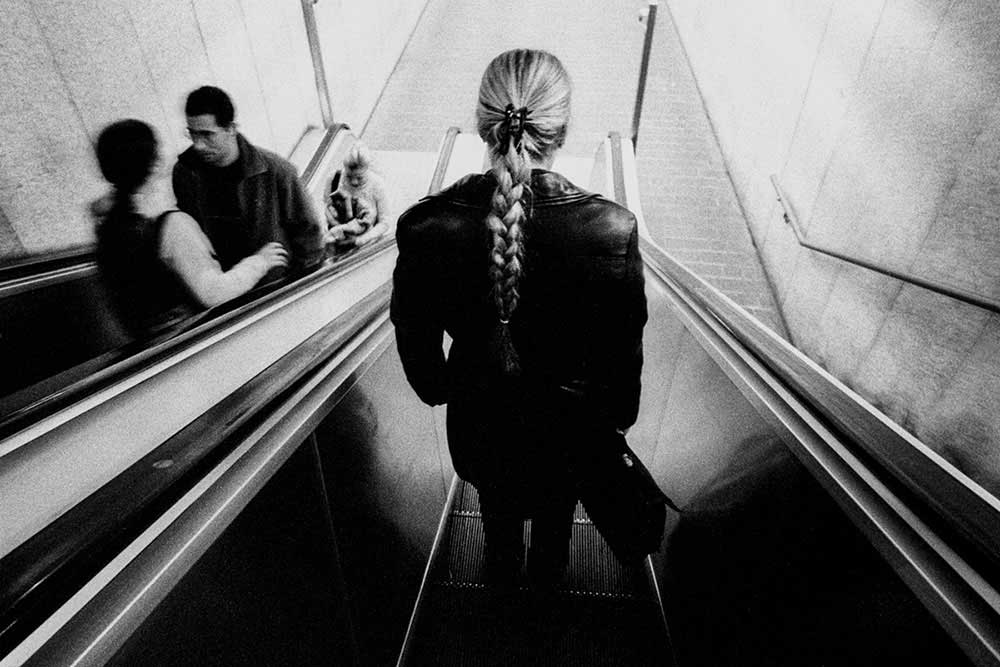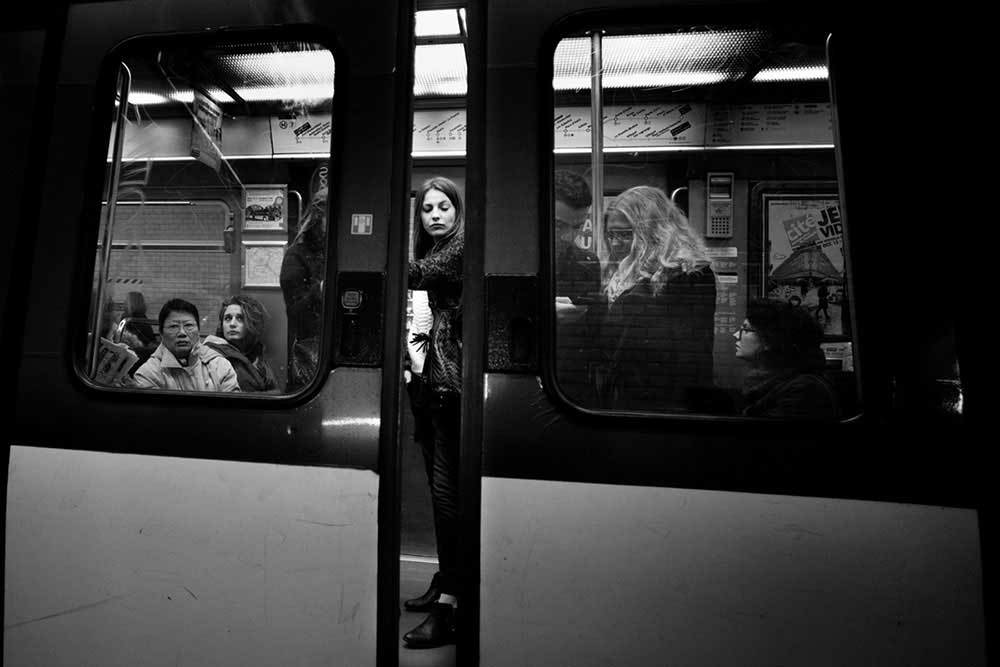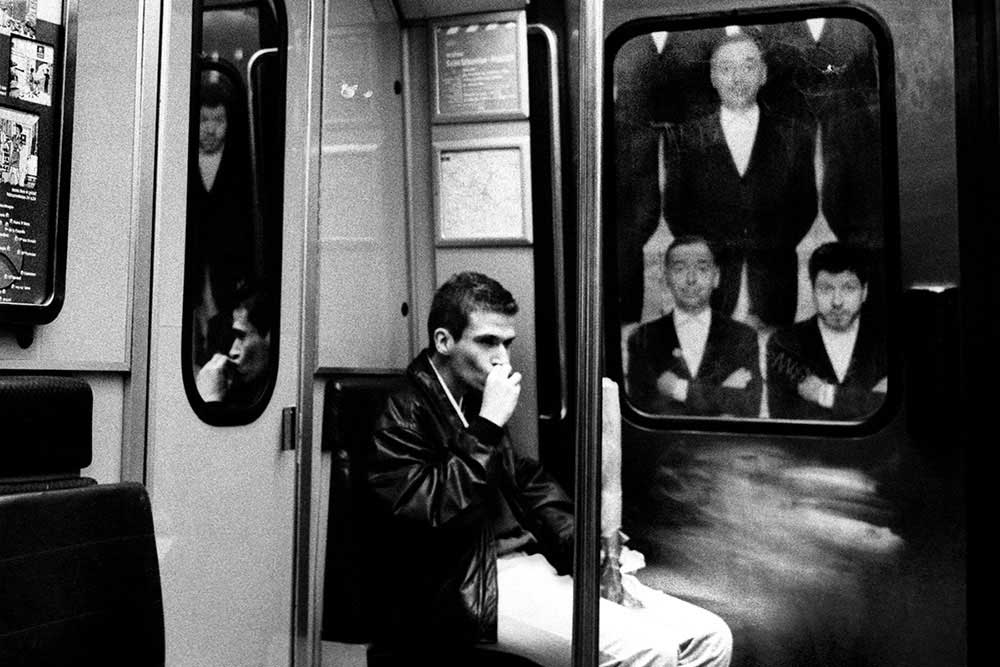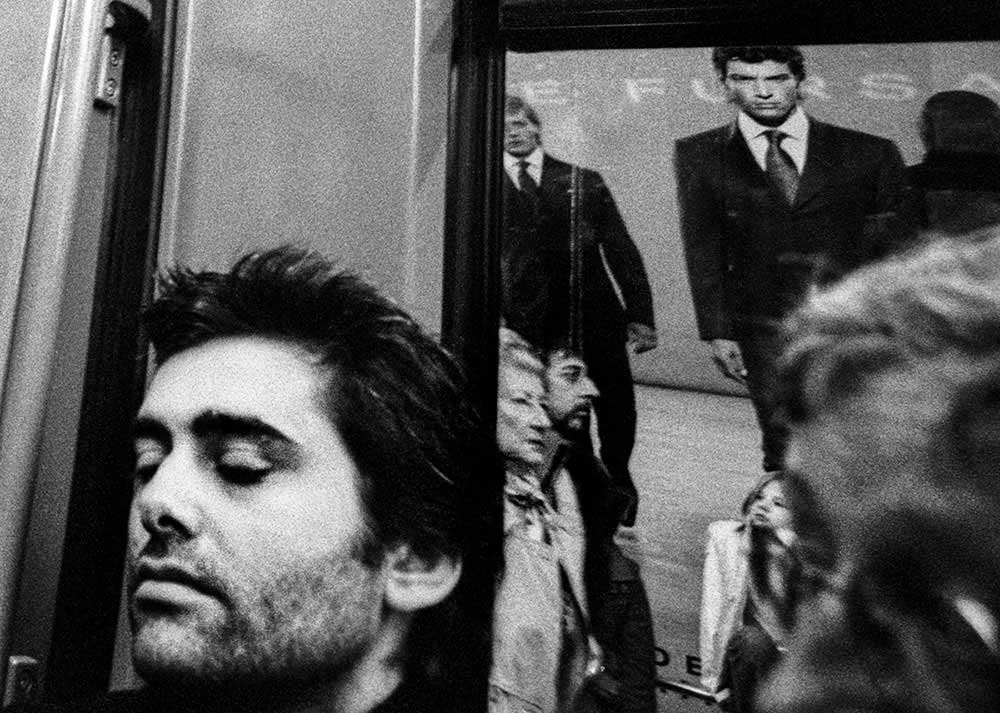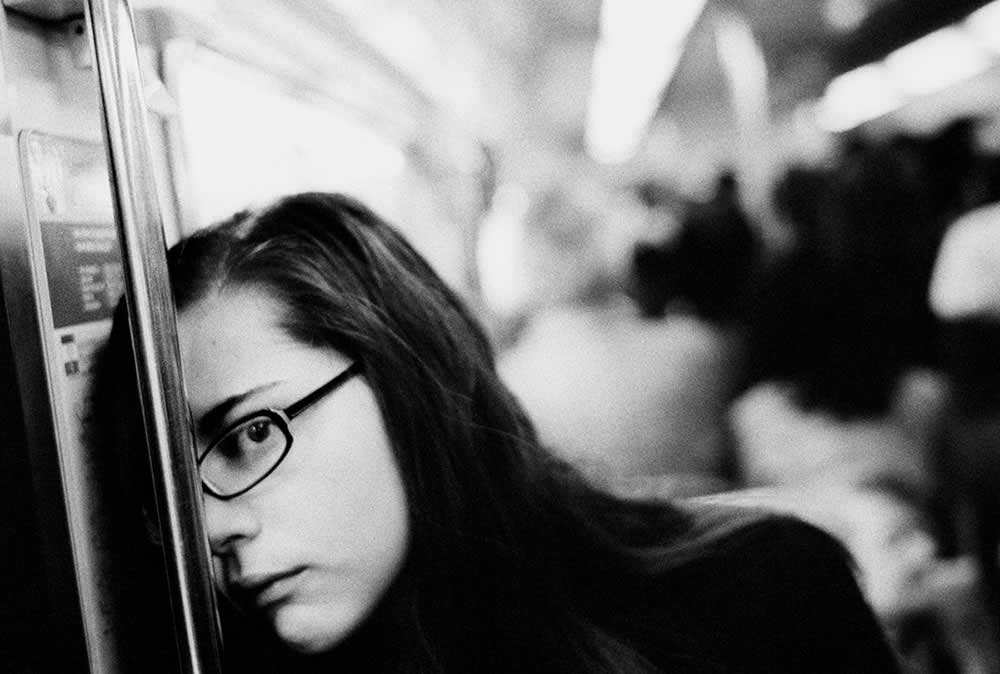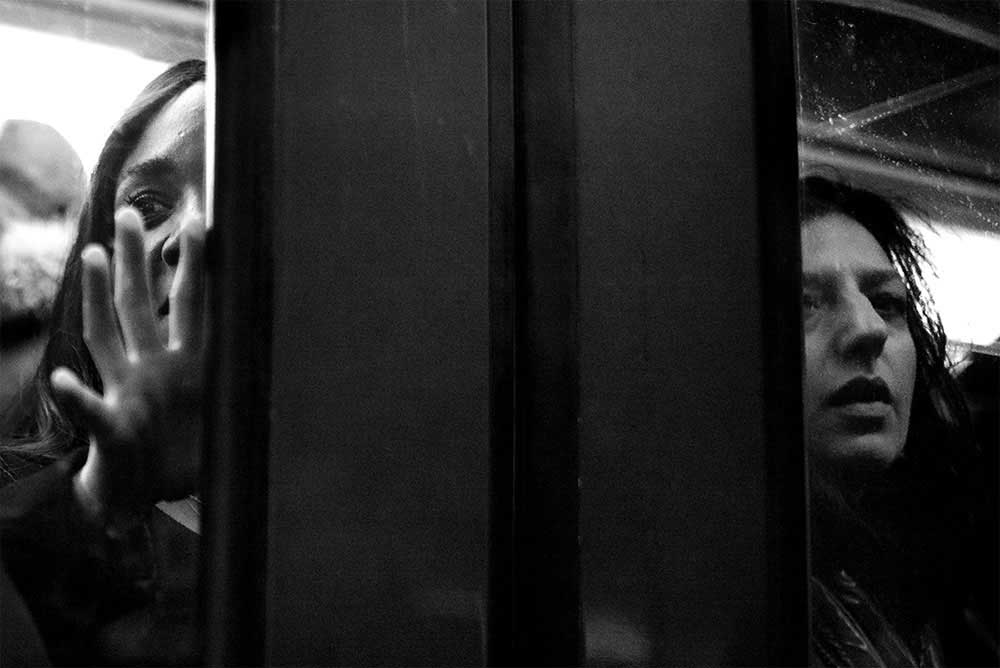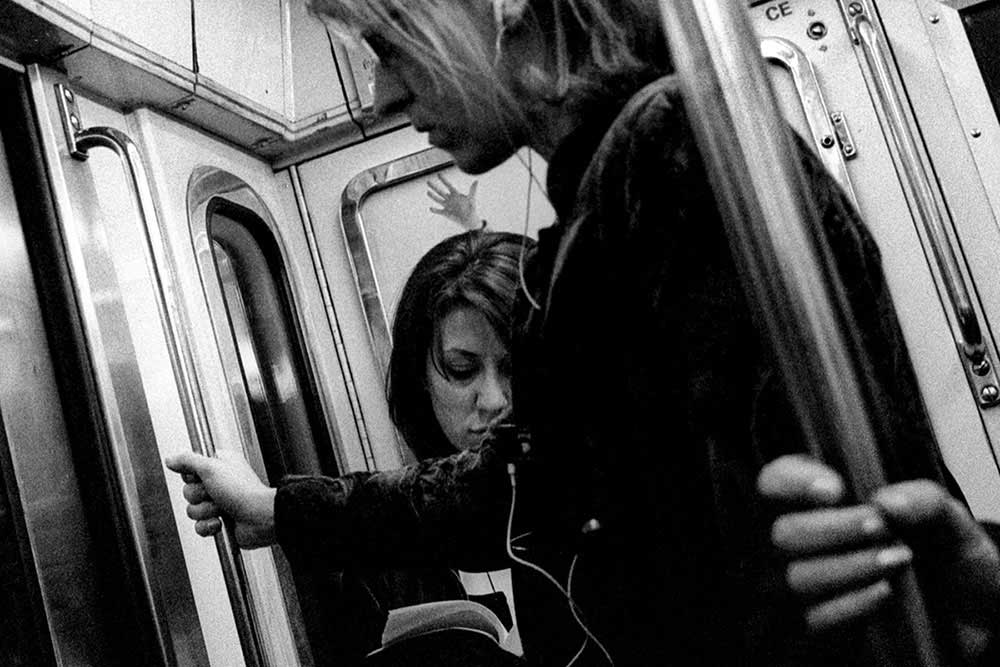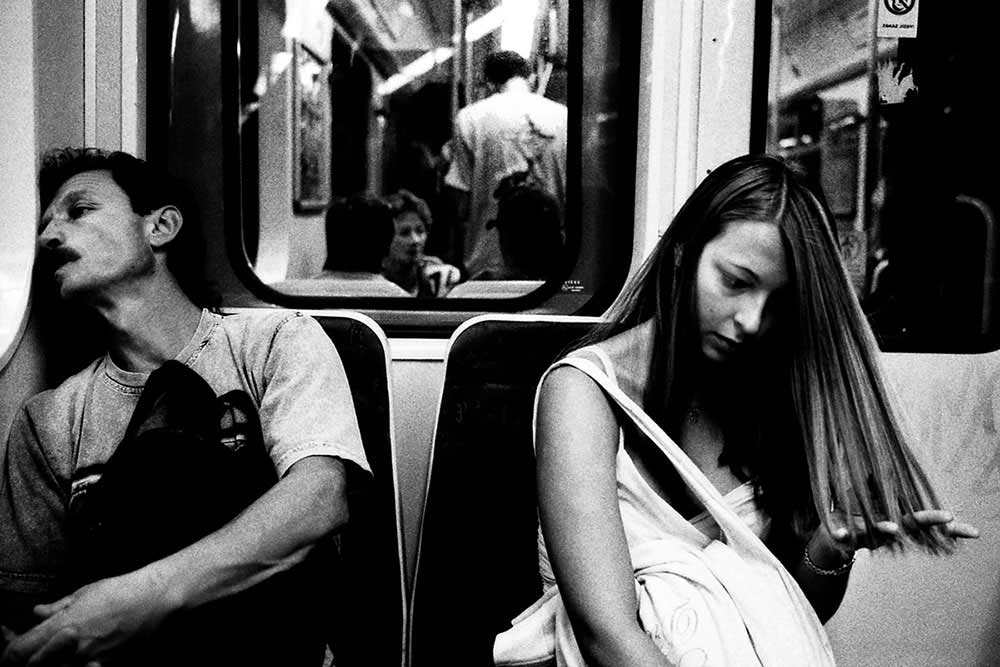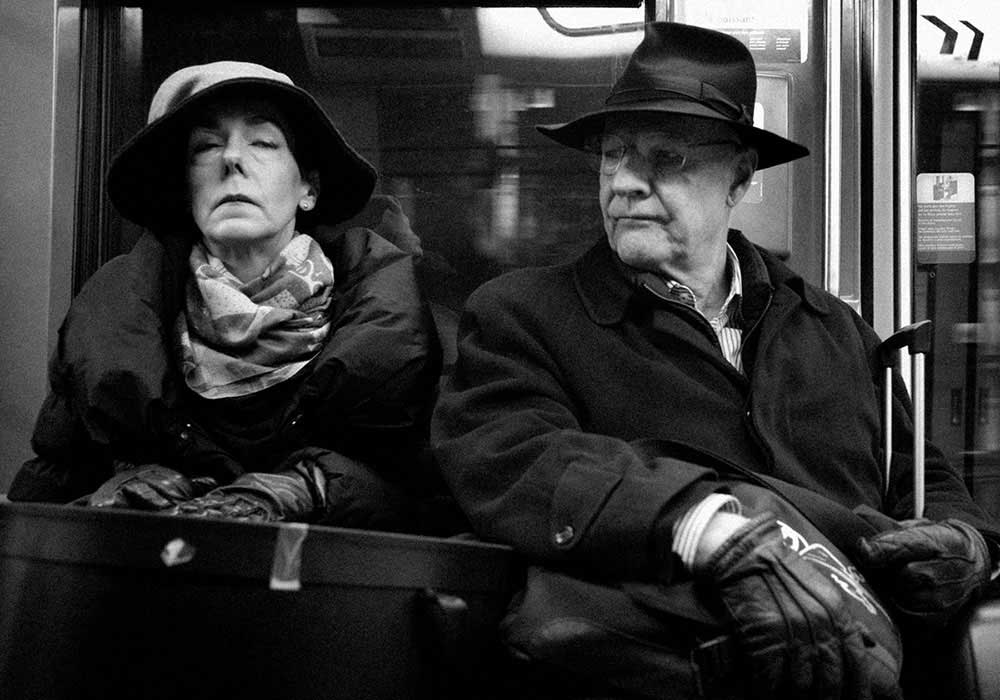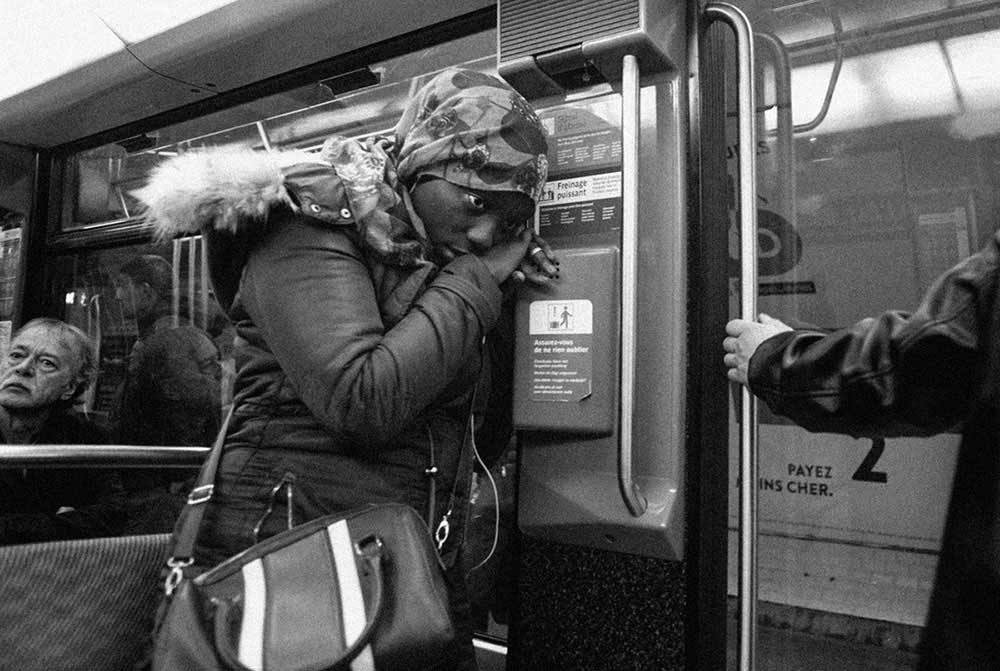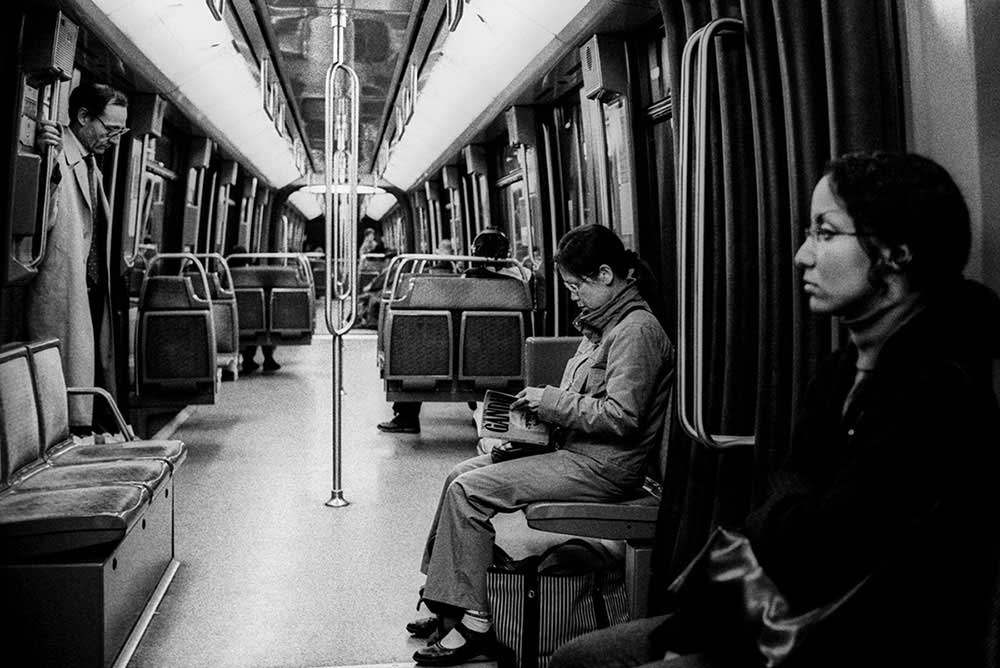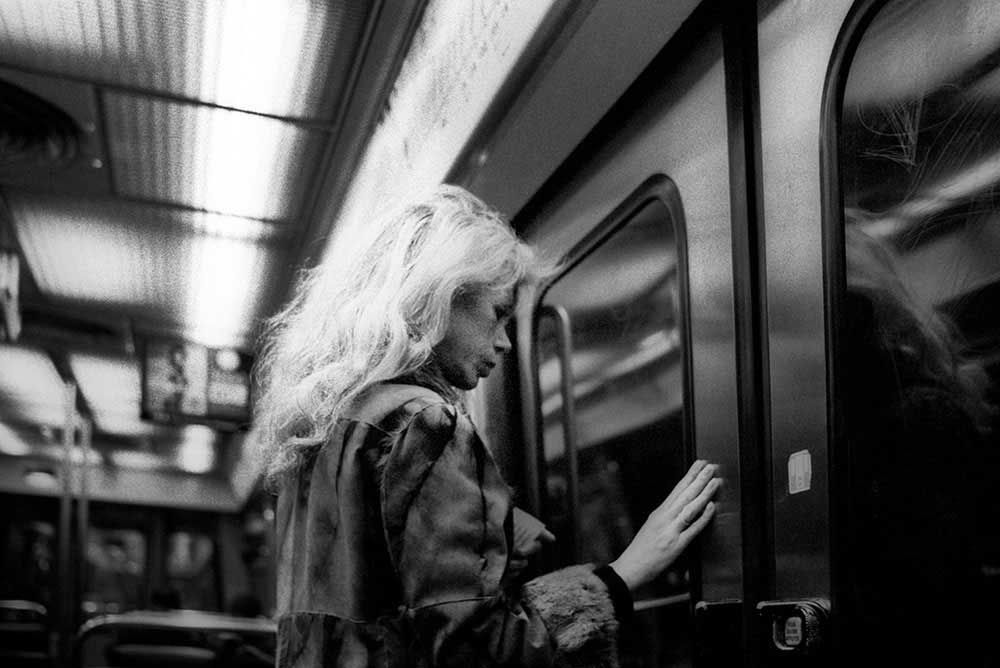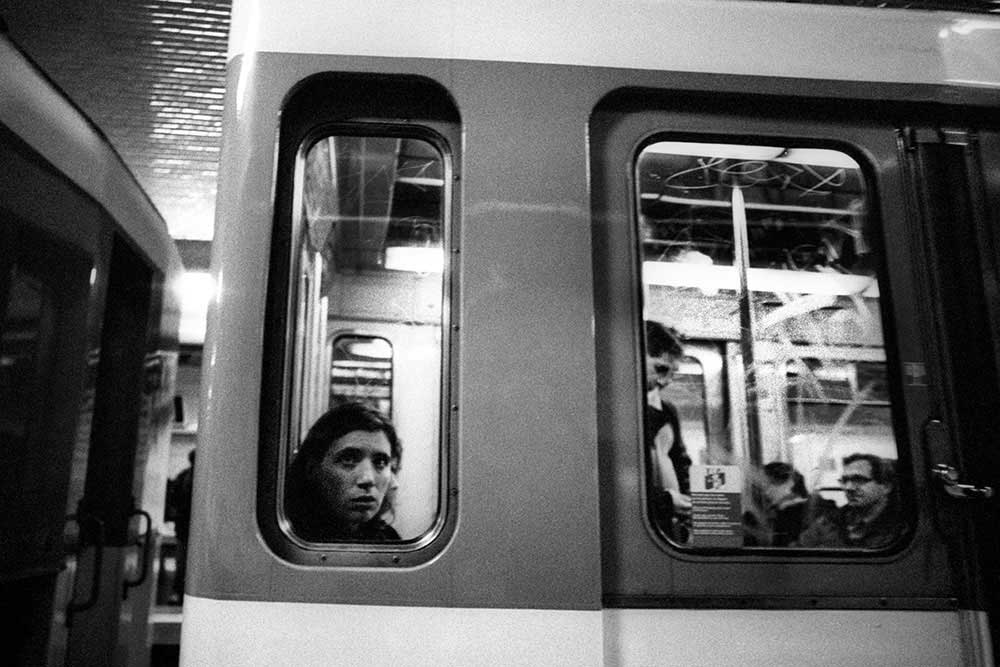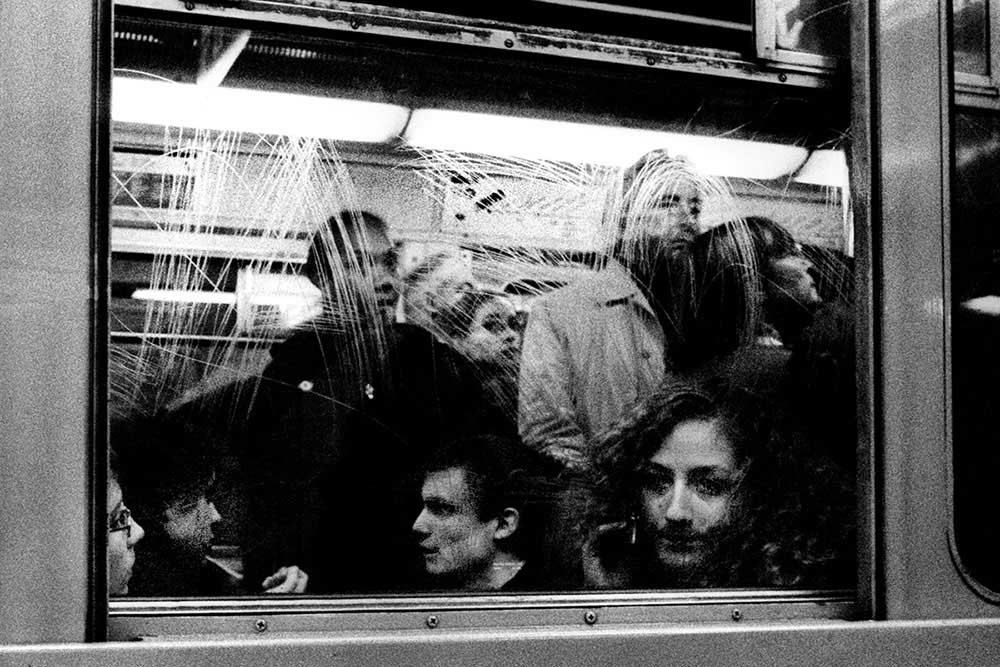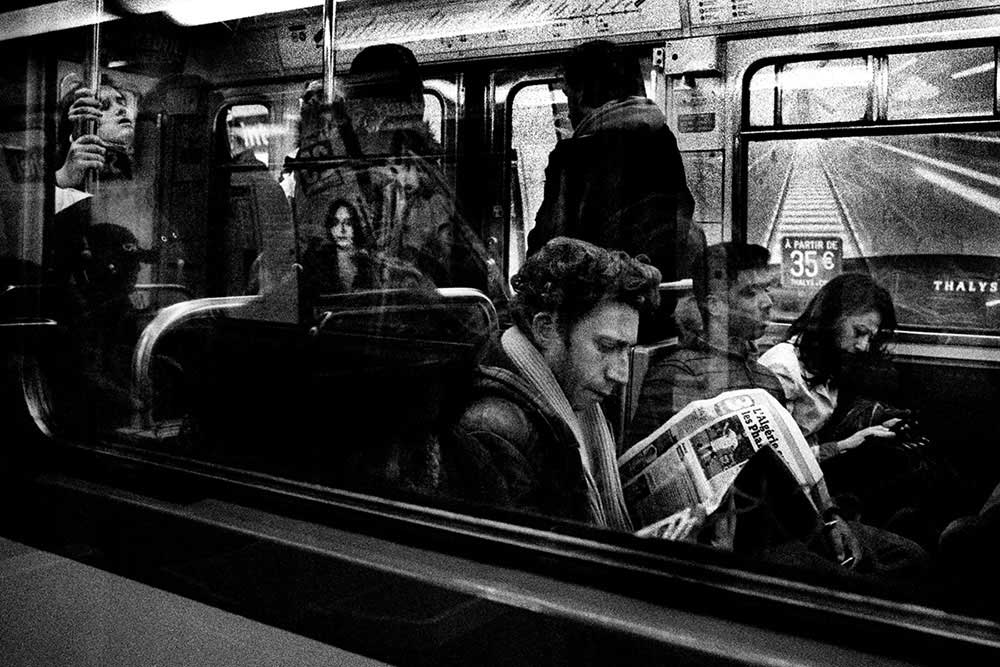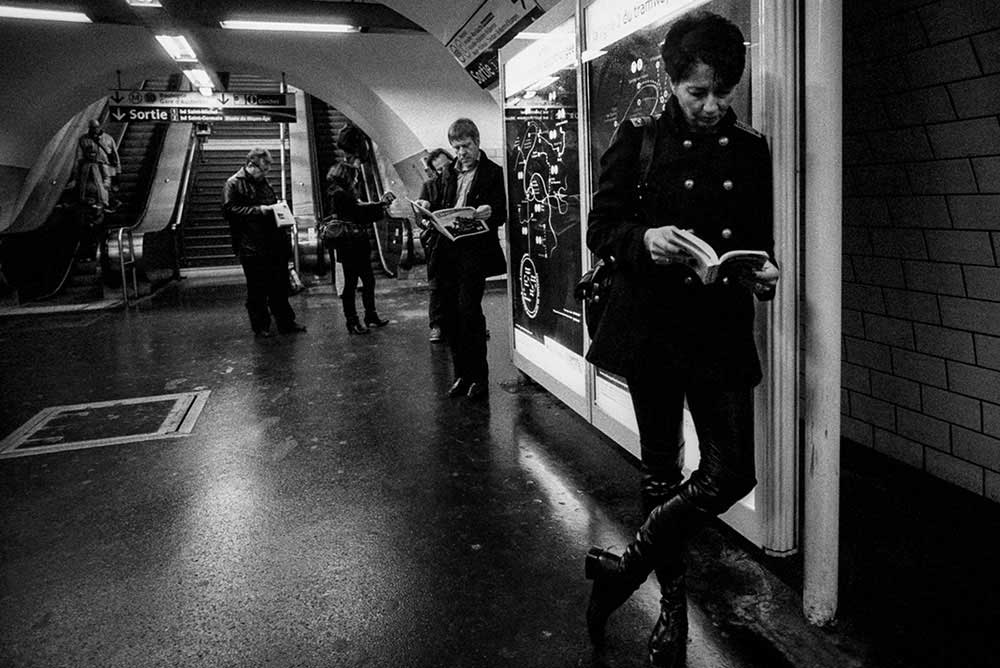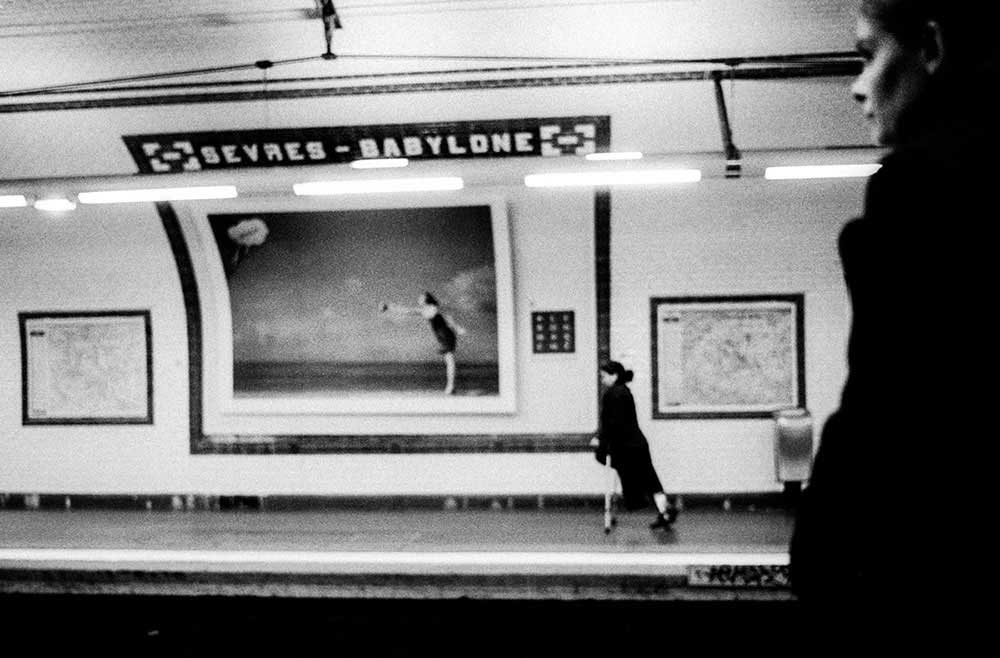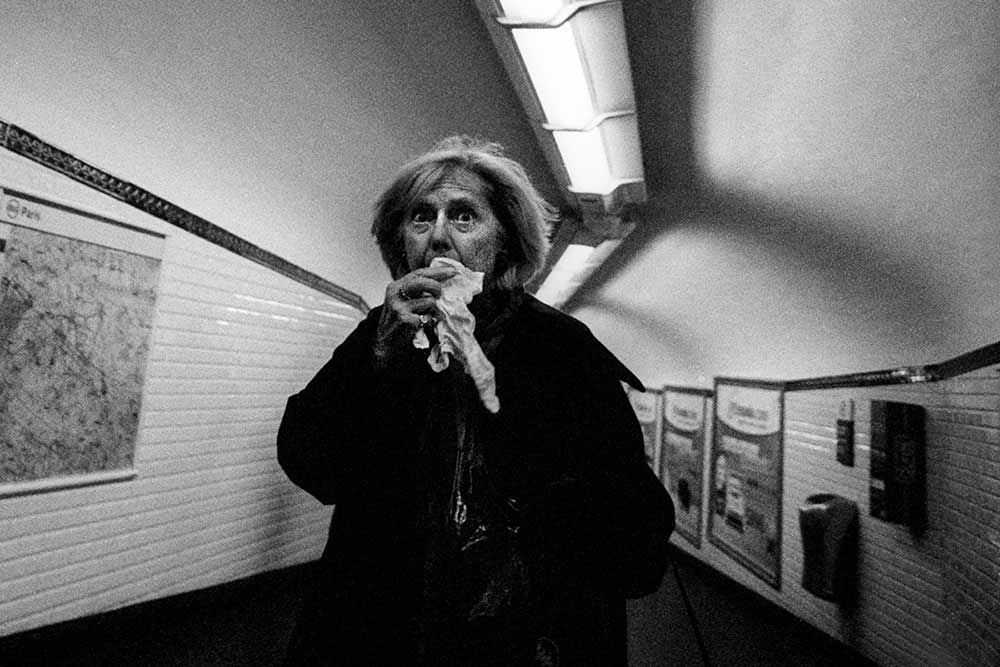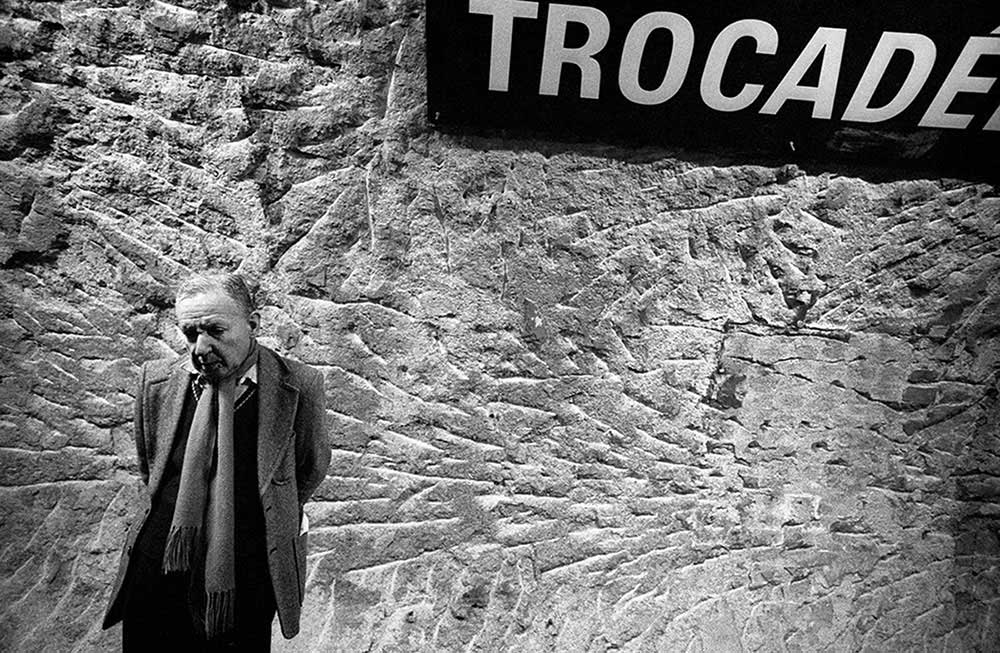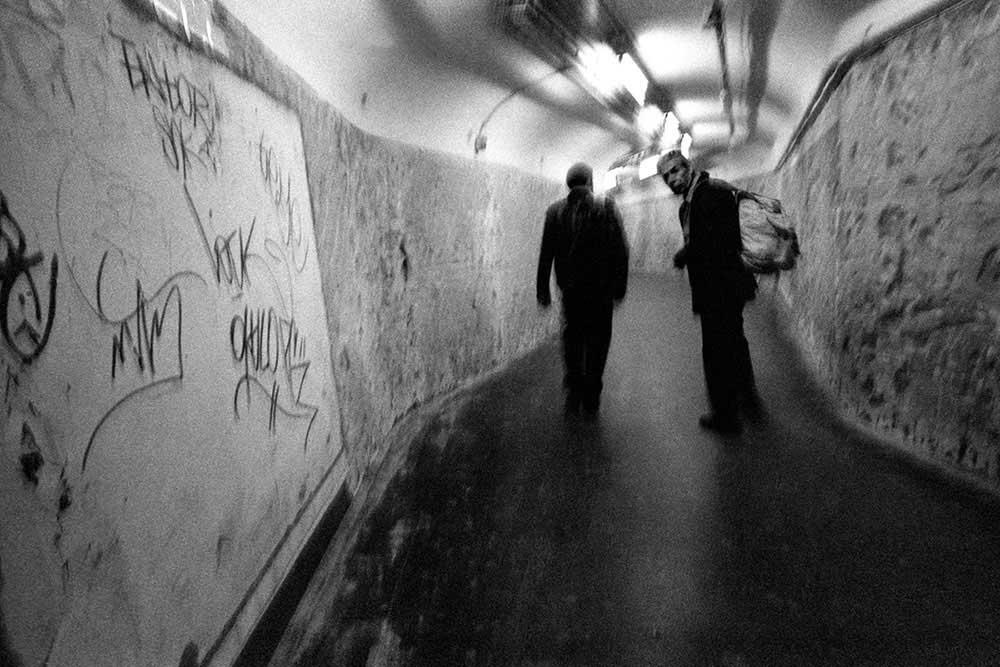The environment is delimited, circumscribed of the subway, in the absence of the external landscape that often represents a container of memories.
The protagonists are absorbed in their thoughts with their heads bowed or intent on looking with the absent gaze of those who look but do not see, as if they were imprisoned in their inner world. We are almost facing an aquarium in which motionless and / or unconscious fish swim. Loneliness is almost palpable and silence seems to saturate every space of the environment in a metaphysical suspension. People anonymous, unknown, isolated, closed in themselves, unable to communicate, who despite being close to each other almost never interact with each other. The scene is still, extracted from the present and frozen out of time.
Essentially, there are three main lines on which Metropolitan Fragments rests, an intense and refined research: creating a personal, intimate reportage capable of giving space and visibility to one’s sensibility; tell about a city in less known or famous places; take possession of the multiple and different dimensions that a person, a place, an atmosphere, a context can take on in a particular moment.
Giuseppe Cardoni, in total freedom of interpretation, relying on the extemporaneousness of the circumstances and his own perceptive capacity, identifies the probable subject, imagines the possible fragment and synthesizes it, after having innervated it with his own sensitivity.
Fragments of reflections connected to each other by a subtle and invisible thread – the structural narrative hatching that connotes the investigation – which have their own significant iconic individuality and at the same time merge, in terms of language, in a stylistic-expressive plot of refined cultural value and stimulating aesthetic taste.
The Umbrian author is fascinated by the relationship between the plural dimension of the identified subject – people, things, places, atmospheres, contexts – and by the correlation and/or contrast with graphic elements.
Metropolitan Fragments is a work in progress. In Cardoni photographer there is a strong hope, also for his way of looking and seeing who he meets (or seeks or finds), to look at and review, in the places already investigated, at different times, the recurrence of similar communicative approaches and perceptive moments. comparable, perhaps in unprecedented, new dimensions, and a different emotional intensity, but with the signs of time gone by. A way to try to measure the transitions that have occurred, estimate the sedimented memories, study the differences and reflect on further possible evolutionary dynamics, previewing, at the limit, forms and contents. (by Fausto Raschiatore, photography critic)
About Giuseppe Cardoni
Lives in Umbria, Italy. Engineer, he prefers B/W reportage. He is co-author, with the RAI journalist Luca Cardinalini of the photographic book “STTL La terra ti sia lieve” (Ed. DeriveApprodi/Roma, 2006). With Luigi Loretoni, he published in 2008 the photo book “Miserere” (Ed. L’ArteGrafica), in 2011 “Gubbio, I Ceri” (Ed. L’Arte Grafica) and in 2014 “Kovilj” (Ed. L’ArteGrafica). Also in 2014 he published “Boxing Notes”(Edizionibam) reportage on the world of boxing. He has dedicated himself for some years to the photography of musical events, he is co-author of the book “I colori del Jazz” (F. Motta Editore, 2010) and in 2019 he has published the photo book “Jazz Notes” (BAM Stampa Fine Art by Antonio Manta). In 2020 he published the book “Life and Death – Mexican Rhapsody”. Award winner or finalist in many national and international competitions.



